
Goats in Medicine: 1 2 3 4 <<First
Goats in Medicine During the Golden Age of Piracy, Page 4
Goat Milk
Of the various goat-based medicines discussed, goat's milk probably seems
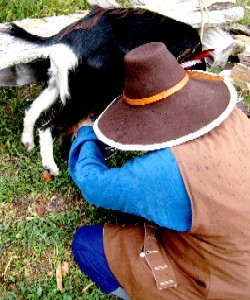
Photo: Mission's Camera
The Author Milking a Goat in Period Kit at
Brigands Grove in 2011
like one of the more normal. In fact, goat's milk still makes up about 2% of the milk consumed in the world.1 It also is reputed to have health benefits that cow's milk does not. According to researchers at the University of Granada, " goats' milk could help prevent diseases such as anemia and bone demineralization."2 The study also found that it improved absorption of
minerals including iron, calcium, phosphorus and magnesium in the stomach.3
Of course, there are also studies that suggest that feeding 'unmodified' goat's milk to infants results in "a host of morbidities"4 that are countered by still other studies that suggest differently. This is why we focus primarily in golden age of piracy era medicine and try to quote modern research sparingly on this page.
Period author Robert James explains that goat's milk "is of a nutritive and abstergent [cleansing] Quality, and esteem'd proper for hectic and phthisical Patients [those with tuberculosis], and such as are consumptive or emaciated. The Whey is preferable to that obtain'd from the Milk of any other Animal, as it is aperient [relieves constipation], abstergent, attenuating [reduces virulence, such as from a fever], a laxative; and for that Reason used in Infusions for purging Melancholy."5
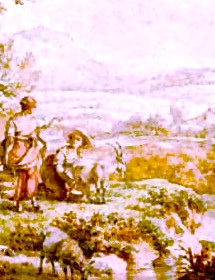
Artist: Jacob Cats
Maids Milking Goats by a Stream (1790)
John Woodall proposes it be used in one of the prescriptions he advises for ulcers caused by scurvy, noting that sea surgeons "shall find them good upon triall."6 In addition to goat's milk, his prescribed concoction contains absinthe and juniper berries boiled together, "the hearbs and berries well brused till a third part be consumed, then straine it, and adde a saffron in pouder {1 dram}, stirre it on the fire till it have boyled a very little, and set it to cleer, and give the sicke thereof three times a day at the least, viz. mornings, noone, and night".7 Of course, it's the milk that does the trick; the absinthe wouldn't have anything to do with the curative powers, now would it?
Sea surgeon John Woodall also suggested goat's milk as a possible cure for colic. Colic is not what we often think today - a baby crying uncontrollably for an unidentifable reason. (If goat's milk could cure that, we would all rest easier.)
During the golden age of piracy, colic usually referred to a blockage in the excretory organs - what present day doctors would call a biliary colic. Woodall explained that "Goates milke, or other milke, boyled with hony, and applied to the belly with a spunge, or cloth warme, in manner of a foment healeth the Collicke, and driveth away wormes, and ceaseth the paine."8.
1 Goat: Milk, butter and cheese, wikipedia, gathered 4/20/13; 2 Goats' Milk Is More Beneficial To Health Than Cows' Milk, Study Suggests, ScienceDaily.com, July 31, 2007, gathered 4/20/13; 3 Ibid.; 4 Goat: Milk, butter and cheese, wikipedia; 5 Robert James, Pharmacopœia universalis, p. 497; 6 John Woodall, the surgions mate, p. 200; 7 Woodall, ibid.; 8 Woodall, p. 241; ;
Goat Suet
Suet is raw animal fat, especially the hard fat found in the abdominal cavity of ruminant animals (which includes goats). Suet is used as a base for making some plasters and many ointments because it works as an emollient, softening the skin being treated.1
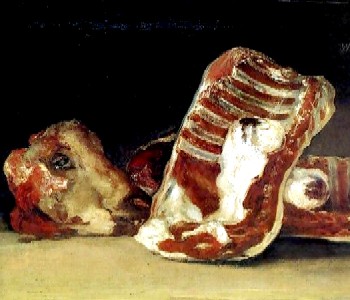
Artist: Francisco de
Goya
Suet Amongst the Meat, from 'A Butchers Counter' (early 19th c.)
Robert James notes that goat's suet "is a powerful Discutient [disperser of morbid matter - material thought to collect and clog tissues of the body], relieve those afflicted with Arthritic Pains, removes Stranguries [painful urination], and allays Hæmmorhoidal Pains."2
French physician Pierre Pomet explains that "a great deal of Goats Suet" was exported from Auvergne and Nevers in France being of "some small Use in Physick [medicine]"3. He suggests that the male goat's suet is particularly useful in medicine and that the better sort should be "dry, of a clear white within, and without"4. He warns that the doctor should "take care it be not mix'd with Mutton Suet, which is not easy to distinguish; therefore do not deal with Merchants you cannot trust."5
When advising what a military or sea surgeon should have in his medicine chest, Gulielmus Fabritius Hildanus lists the fats of Fats of 'Geese, Beef, Deer, Goats, Men [yes, you read that right], Hens, Hogs and Bears.'6 He further details that "the Sewet of Bears, Cows, Goats, and the like, which are of a solid consistence, are to be put in Bladders wrapt afterwards in Paper."7
1 Suet, definition, theFreeDictionary.com, gathered 4/21/13; 2 Robert James, Pharmacopœia universalis, p. 497; 3 Pierre Pomet, The Compleate History of Druggs, 3rd Edition, p. 258; 4 Pomet, ibid.; 5 Pomet, ibid.; 6 Gulielmus Fabritius Hildanus, Cista Militaris, Or, A Military Chest, Furnished Either for Sea or Land, p. 19; 7 Hildanus, p. 11
Goat Teeth
Around the golden age of piracy, there was some discussion of using animal teeth to replace missing or pulled human teeth, although it is not entirely clear that this was actually done. If it were, it would most likely have been used on affluent patients on land rather than at sea.
The first English author of a book on dentistry discussed it conceptually in 1687 and, being a rather fascinating account, I will include the full text. I have inserted some paragraph breaks for clarity.
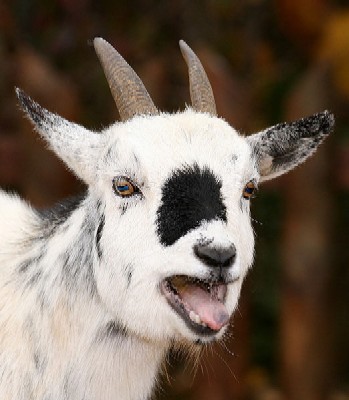
Photographer: Kevin Law "Say ahh? OK. Why?"
First, I would chuse an Animal whose Teeth should come nearest to those of the Patient; as a Dog, a Sheep, a Goat, or a Baboon, &c. and having tied his legs together, I would fasten his head in some convenient place, so that he might not stir in the least, and by some proper means keep his mouth open as long as I should have occasion:
[T]hat done, I would open the Gums round the Tooth to be taken out of his [the patient's] head, not only to the very Jaw-bone, but as far between the said Bone and the Tooth, as the finest Instrument could go, leaving a very little portion of the Gums about it; and then having used the same circumspection, in dividing the Patients Tooth from the Gums, and the Jaw-bone, I would draw it forth...
[P]ut immediately in its place that of of [sic] the Brute; fastning it very well and streight [tight] between the other Teeth: and then with the use suitable Remedies [medicines], I do not question in the least but that it would unite to the Gums and Jaw-bone, and in a little time become as fast as any of the others: which performance might properly be termed the natural Restauration, or Renovation of Humane Teeth.1
Keep in mind that they had not anesthetics at this time. This sounds like an unusually painful operation for the patient. (Not to mention the goat.)
1 Charles Allen, The Operator for the Teeth, p. 20-2
Goat Urine and Dung
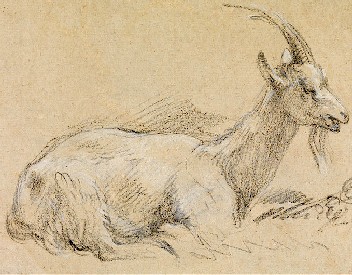
Artist: Thomas Gainsborough, Study of a Laughing Goat (late 1770s)
Animal urine and dung actually have quite long histories as
medicinals. In fact, urine was probably one of the few truly sterlile liquids available during the golden age of piracy (although the need for sterility was not actually understood at this time.)
Some people claim that urine is actually a wonderful natural medicine. As Martha Christy details, a person's "urine is an enormous source of vital nutrients, vitamins, hormones, enzymes and critical antibodies that cannot be duplicated or derived from any other source. They use urine for healing cancer, heart disease, allergies, auto-immune diseases, diabetes, asthma, infertility, infections, wounds and on and on"1. She goes on to cite multiple research studies proving this in an article gathered from the internet. (And if you can't trust an internet article, what can you trust?)
Feces seems a little harder to digest (so to speak) as a medicine, but as the internet proves, it can be done. in fact, cow dung seems all the rage in certain labs in India as a medicinal. A lab in Amhedabad mixes "bovine excreta with medicinal herbs" to create concoctions "which they say can cure a whole herd of ailments from bad breath to cancer. ... 'It kills all the germs and bacteria and heals wounds. And dry cowdung is a great scrub to get rid of dead skin and improve blood circulation.'"2 Feces to cure bad breath...
However we're not interested in sincere, yet wacky holistic modern theories of using dung and urine in medicine, we're interested in sincere, yet wacky golden age of piracy era practices of using dung and urine in medicine, specifically as they relate to goats.
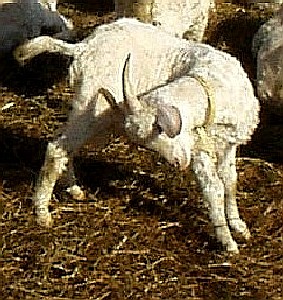
"Are you sure you want to keep that?"
The usually staid Robert James has the most to say on this particular topic. He advises his readers that goat's urine "is recommended above that of all other Animals for dissolving the Stone [kidney and urinary tract stones], and promoting a discharge of Urine; for which Reason it is proper in a Dropsy."3 (Dropsy - an accumulation of fluid under the skin - is often accompanied by poor urine flow.) He goes on to suggest using the goat's urinary bladder can be "dry'd and reduc'd to a Powder" because "it is said to be a medicine of peculiar Efficacy in an Incontinence of Urine."4
James is also the one responsible for recommending goat feces. He gives quite a well-thought out and concise explanation:
The [goat's] Dung is of a heating, drying, abstergent, digerent [digesting], aperient, and acrid Nature; for which Reason it is principally used in hard Tumors of the Spleen and other Parts, Swellings of the Parotid Glands [one of the salivary glands], Buboes [swelling of the lymph node], and for consolidating desperate Ulcers, as also in Dropsies, and sciatic Pains. When calcined [heated in the absence of air], it makes a fine Powder, proper in all Cases where the use of Detergents is indicates, such as Alopecia [loss of hair from the head] and Ring-worms. Internally it is properly exhibited in Disorders of the Spleen, Jaundice, Obstructions of the Menses, and other Diseases of a like Nature.5

"....and then he got a pan and waited for me to pee..."
Now, having given you all that information on using goat urine and dung, I must confess that the only surgeon where I have found a reference to using either of these things in my period source notes is German surgeon Matthias Gottfried Purmann, who was not a sea surgeon.
In keeping with one of Robert James' suggestion, Purmann used this cure on "a Person of great Quality" with dropsical legs. First he bandaged the legs with a linen roller. Then he applied a plaster which "made the Legs sweat very well, and something abated the Swelling". However, "seeing it would be a tedious piece of Work, we applyed Goats Piss and Sheeps Dung to the Legs, eight Days together, which succeeded very well, but since it made the Room nasty, and the Patient was obliged to receive many Visitants, we left it off"6, no doubt to the great relief of the patient.
Of course, we can't be certain why sea surgeons didn't advuse using such preparations. It may have been because they didn't feel that urine and dung didn't work. It may also have simply been due to a lack of availability, although we do know that live animals were kept on ships. It may also have been simply because in such a confined space, it might make more than just the one room nasty. If I had to bet, my money would be on that last reason.
1 Martha Christy, Your Own Perfect Medicine, shirleys-wellness-cafe.com, gathered 4/21/13; 2 Rupam Jain Nair, Cow Dung, Urine as Medicine?, 3/2/2010, discovery.com, gathered 4/21/13; 3 Robert James, Pharmacopœia universalis, p. 497; 4 James, ibid.; 5 Ibid.; 6 Matthias Gottfried Purmann, Churgia Curiosa, p. 194

